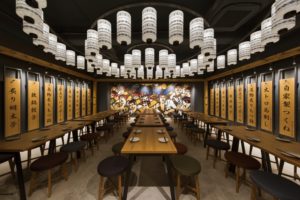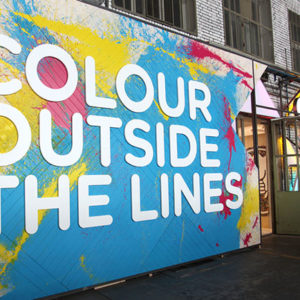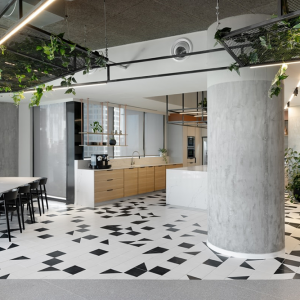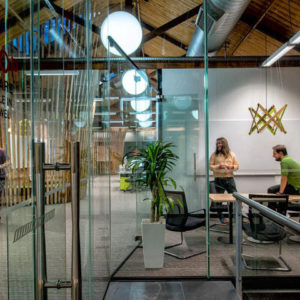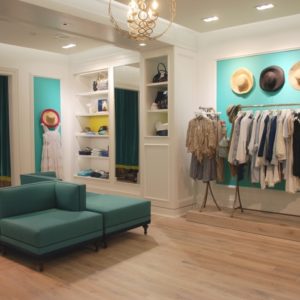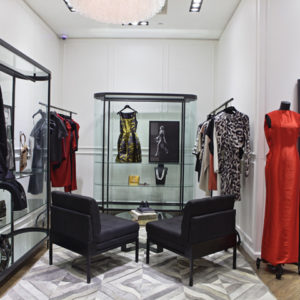
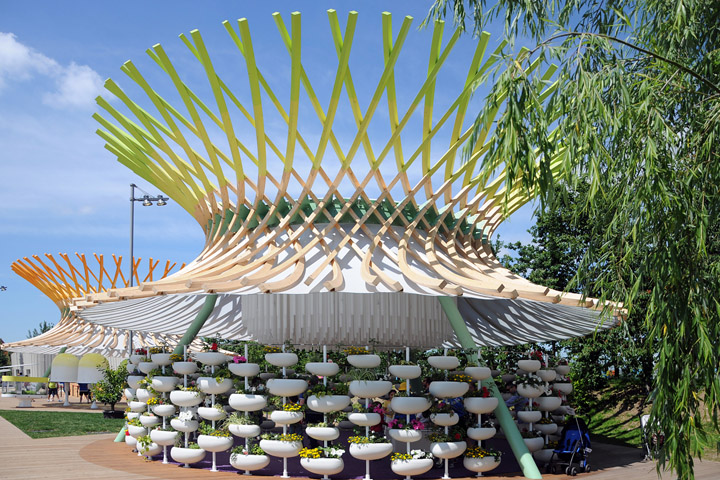

The Children’s Park, a linear garden with eight attractions on raised platforms, has giant bobbin-shaped elements in wooden lattice sheltering the exhibits and children’s activities from rain and sun. Fragments of domesticated nature where the natural and artificial coexist, the exhibits were designed to privilege the organic language of nature as opposed to a more formal architectural vocabulary.
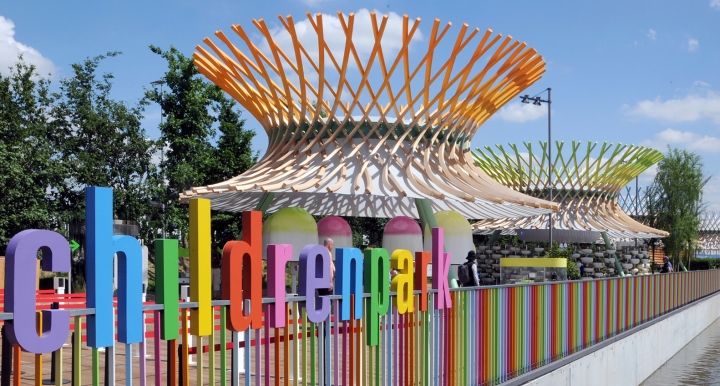
The project, essentially a nature walk with eight exhibits, offers children playful learning experiences as they interact with various aspects of Expo Milan 2015’s core theme, “Feeding the Planet, Energy for Life”. An hour long tour includes each of the eight exhibits, brief interactive games for groups of around 25 children (a typical school class size), allowing approximately 1,200 visitors an hour, including adult chaperons.
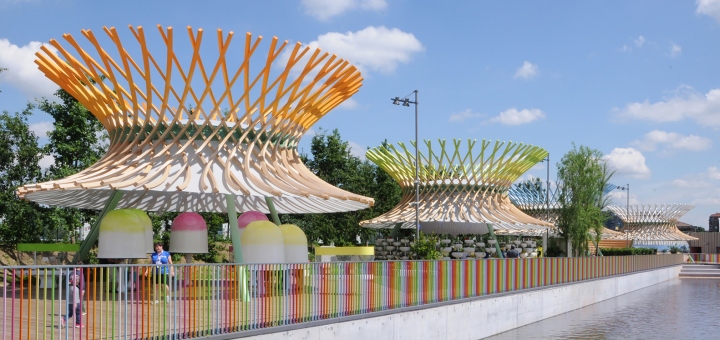
A path of larch wood slats in irregular widths widens out in correspondence with the exhibits. The suspended bobbin shaped structures, lifted off the ground by three supports, are twelve meters in diameter and 7.5 meters tall. The structures, also used for technical and support equipment, light up in the evening, making the Children’s Park visible from a distance.
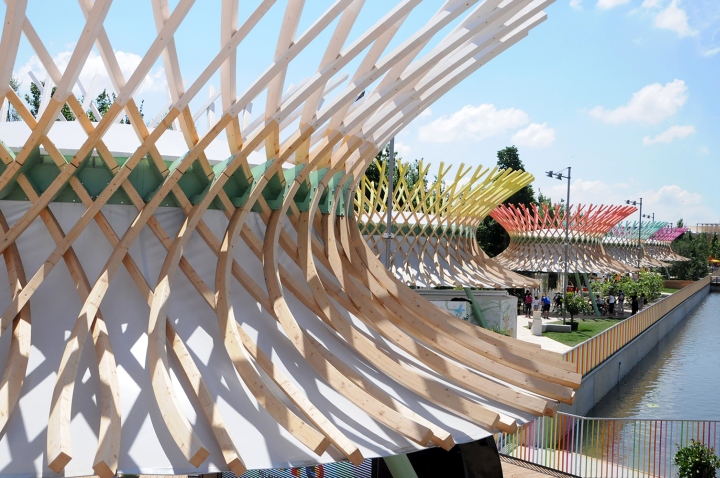
The design strategy was inspired by a need to create a unified visual perception while heralding the experiential, interactive and didactic exhibits along the path, occasionally interspersed with natural planting. The solution was to approach the project as landscape architecture, confronting the language of nature-by-design, the lexicon of historic Italian gardens, but also the sequential nature more typically found in agriculture.

The objective was not to build architectural structures but places with permeable surfaces using the language of gardens, woven elements that recall living plants or plant material fossils. The structures, their colors becoming less intense towards the top, also create a dialogue with the riparian forest planted along the Park’s edge. Just inside, the Expo canal is planted with themed areas of mono-specific vegetation; decorative or fruit bearing trees and shrubs are linked to the didactic path which includes a butterfly garden and an aromatic plant garden.

The structure for park amenities (bathrooms for children, technical equipment to monitor the exhibits, security surveillance, technical areas, and the flights of stairs leading to the plaza are clad in larch wood in three different widths, each stained a different beige and laid out in random double curves, dematerializing the structure and increasing the visual perception of materiality and color. The park’s entrance and exit have picnic areas surrounded by vegetation typically found in oak-hornbeam forests, and glades equipped with rainbow colored gazebos, a labyrinth of reflective prisms, and other surprises hanging from trees.
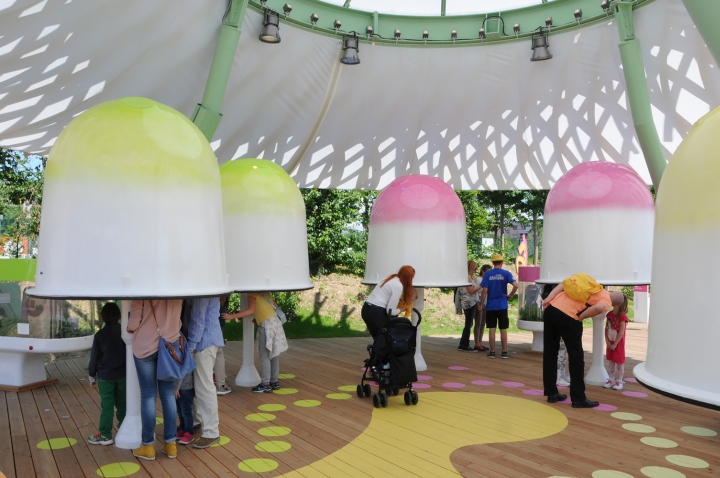
The Children’s Parks proposes an image of children as explorers; intelligent, competent, capable of meeting contemporary cultural on a visual level, and gifted with their own personal learning strategies. The aesthetic is far from the usual childish fairytales and primary colors, brimming with a visual language created by and for children: large animals made from their original drawings, planetary messages, interactive video, and opportunities to explore the complex theme of sustainable living.
Architects: ZPZ Partners
Photographs: Courtesy of ZPZ Partners
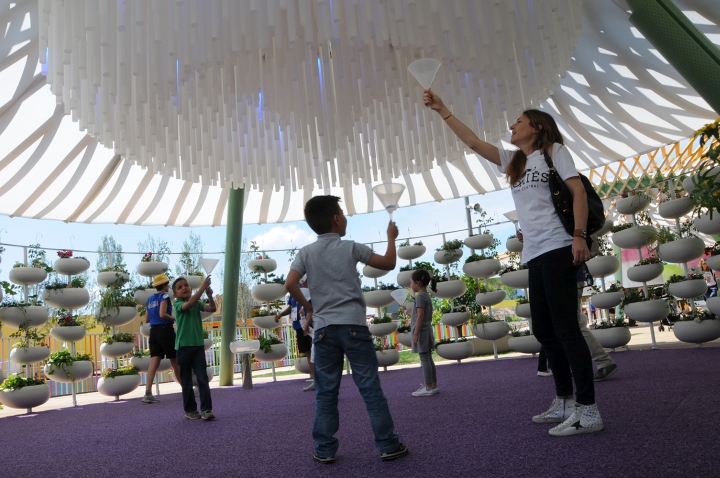
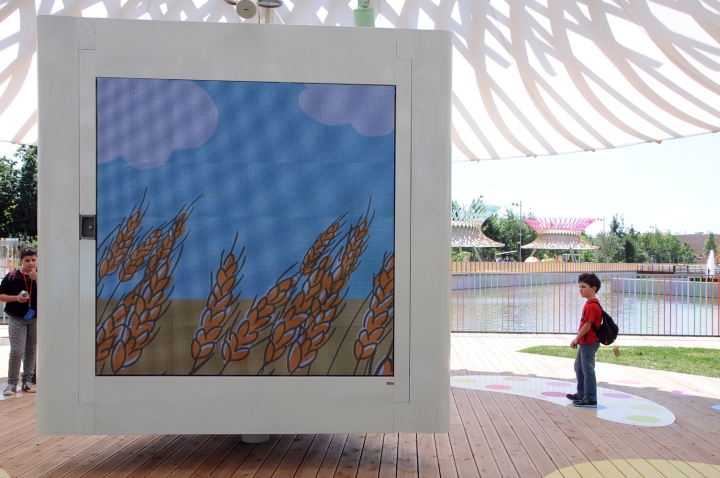

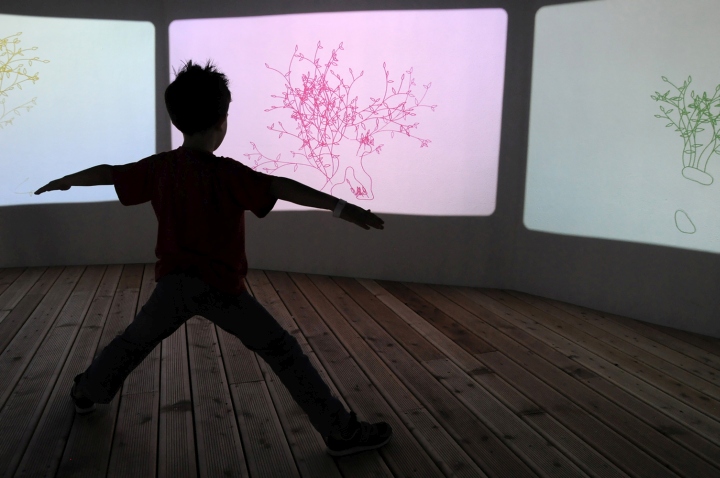
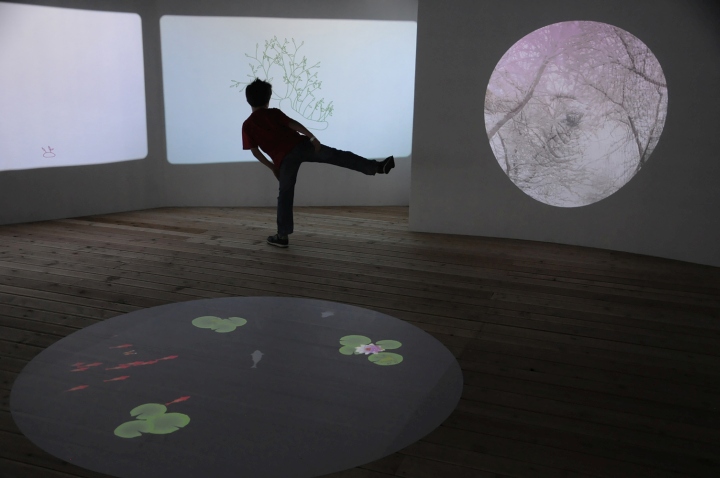


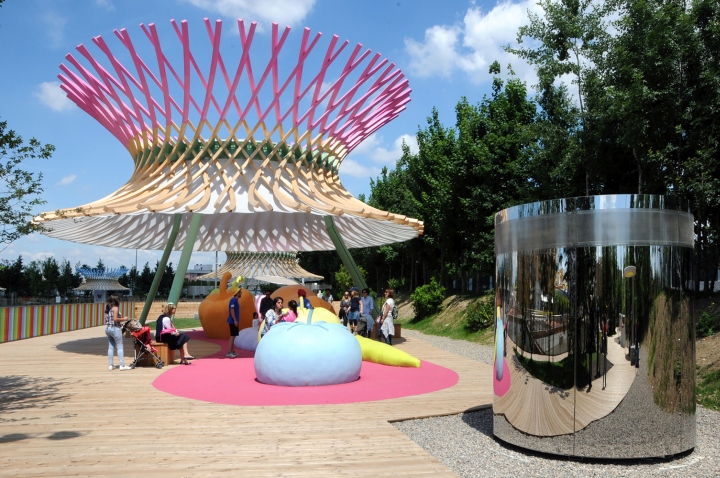
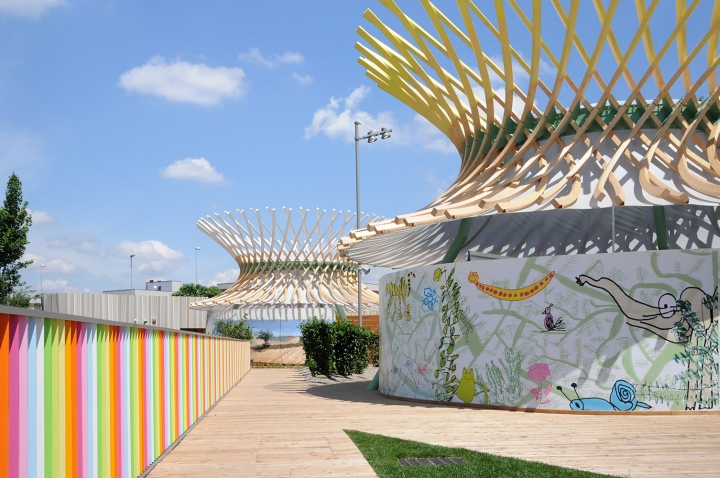
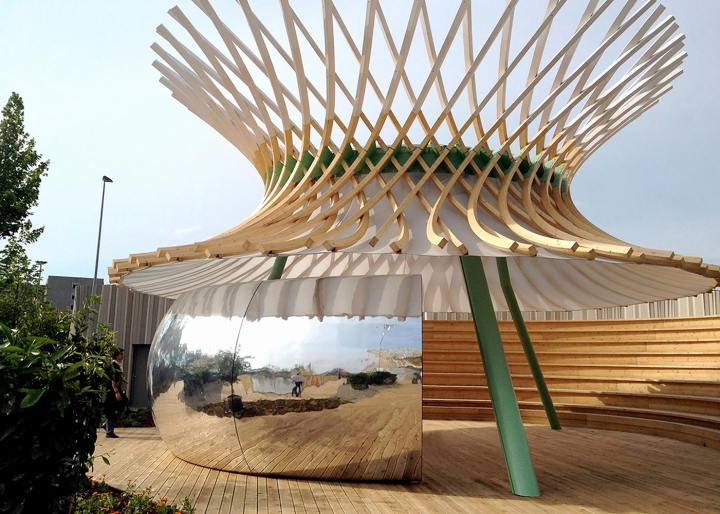
http://www.archdaily.com/771353/children-park-at-expo-2015-zpz-partners
















